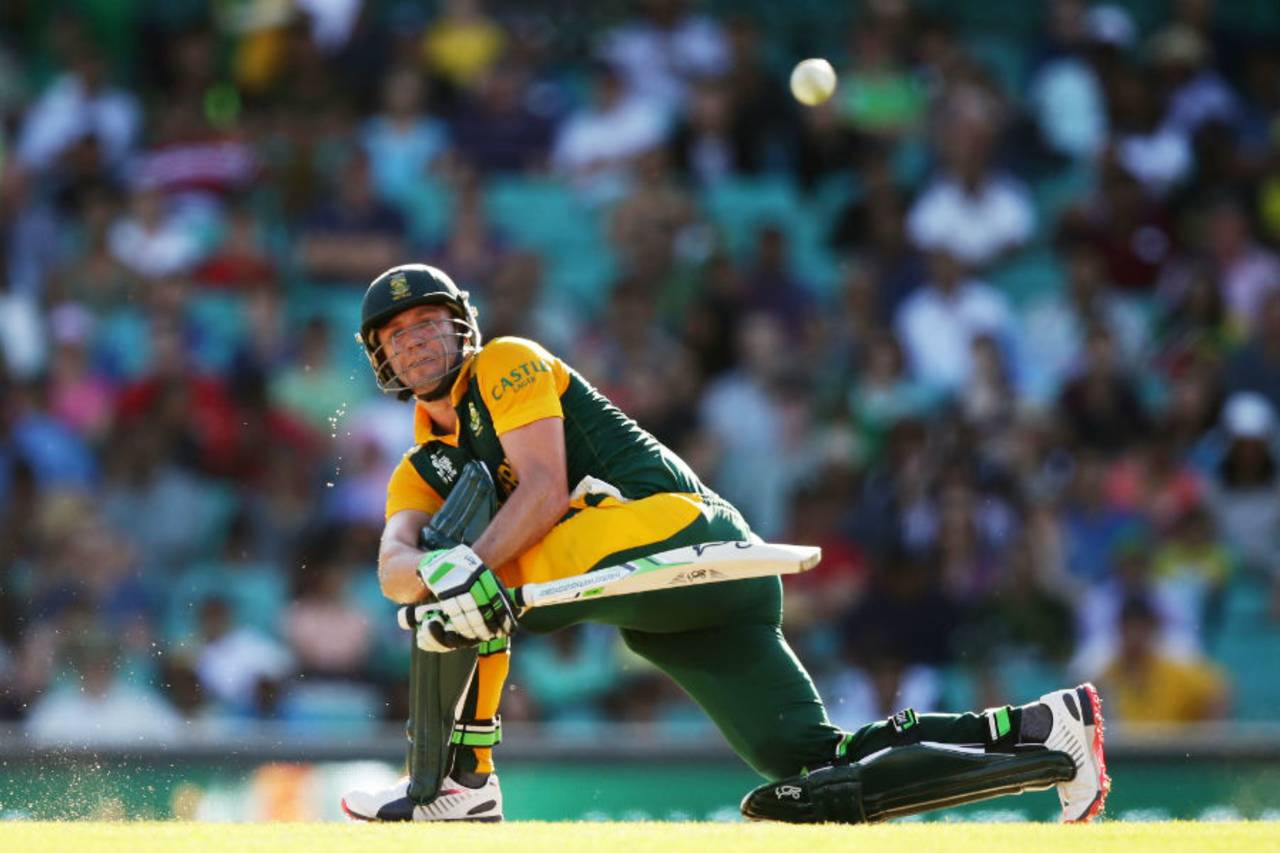AB de Villiers jumped across, and Andre Russell followed him with an intended yorker that ended up as a low full toss. De Villiers went down on one knee and played a scoop-sweep over the head of the fielder at short fine-leg for a six.
In another over, he threatened to move across with his back foot but withdrew at the last minute; Jason Holder decided to target the stumps this time, to which de Villiers reverse-swept him for a one-bounce four over the gully region.
Some of the shots de Villiers manages to pull off these days fall in the "unbelievable" category. The bat he uses weighs well over a kilogram, but he moves it like a wand. How does he do it, seeming to defy the fundamentals of batting, writing his own rules for future generations to follow?
Big hitting has a few basics. The head must stay still at all times, especially before and while the shot is being played. The body must remain stable and maintain shape after executing the shot. And the body must allow the bat to swing freely, by moving away or adopting an angle to avoid interrupting the flow of the bat.
The notable thing about de Villiers' batting is the stillness of his head. While most people talk about his incredible bat speed, he focuses a lot on keeping his head still even when he's on the move - and he's on the move quite a lot. Regardless of whether he is jumping across the stumps to prepare for a scoop or stepping down the pitch to take on the bowler, his head is poised. His body moves but not his head. The stillness of the head allows him to follow the path of the ball till the last possible moment, and that facilitates the playing of defensive and attacking shots.
The second striking feature is his stability at the crease. You need a strong base to execute big shots; they say that to generate maximum power both your feet should be firmly grounded, for that allows you to use gravity to your advantage. Like most South Africans, de Villiers too has a back-and-across trigger movement, but unlike others he crouches a little while preparing for the ball to arrive. By doing so he lowers his centre of gravity, and that leads to greater stability. A stable base is necessary to create power. Whenever he wants to hit these extraordinary shots, de Villiers stays low, broadens the base by keeping his legs apart, and maintains his shape while hitting.
A perfect yorker is almost impossible for any batsman to get away. That's why the differentiator is a player's ability to hit slightly off-target yorkers - the ones that fall a few inches shorter than intended. De Villiers' low hands allow him to get under the deliveries that other batsmen struggle to dig out.
He also has the extraordinary ability to go down on one knee and play the scoop shot. While the helmet has made it possible for modern batsmen to contemplate these adventurous shots, there aren't many who can attempt them against genuine quick bowlers. The ones who do try to pull them off usually have their eyes closed at the point of impact because their head is moving, but that's not the case with AB. His ability to change his shot at the last minute shows that he is able to keep his eye on the ball for longer than other batsmen. Also, he makes sure he is positioned optimally while attempting the shot: he clears the front leg and tilts his body a little to open up the area behind square on the leg side when he wants to hit finer, for getting inside the line isn't always possible against a fast bowler's attempted yorker.
So is it possible to bowl to him and get away relatively unscathed?
While there isn't a foolproof method of getting the better of AB when he's in full flow, there are some things a bowler can attempt to minimise damage.
Whenever de Villiers jumps across and goes down on one knee, bowlers tend to follow him; that is the basic instinct of a bowler confronted with a moving batsman: follow him. That's just what de Villiers wants the bowler to do, so it's imperative to resist the temptation and bowl at the stationary target - the stumps. It may still go for a four or a six but in case he misses, you give yourself a chance.
Also, I find it surprising that not many bowlers bowl a bouncer when he jumps across, for de Villiers isn't really prepared for that ball at that moment. When you are crouched low down on the back knee, you're not in the ideal position to play the hook or pull. I can understand that it's easier said than done with the new rules of having five fielders inside the circle but it's still worth trying. We've all seen the outcome when bowlers go through the motions instead.
Former India opener Aakash Chopra is the author of Out of the Blue, an account of Rajasthan's 2010-11 Ranji Trophy victory. His website is here. @cricketaakash
